The Journey to Teaching Kids Social Skills
Table of Contents
Hello, for those that don’t know me I’m Sara Thompson, a new blogger here at More4kids and a proud mom of two wonderful kids, Lily, who’s 7, and Max, 10. Today, I want to talk about something that’s been on my mind lately – the importance of social skills in our children’s development.
Why Social Skills Matter
Social skills are the building blocks that allow our children to interact and communicate effectively with others. They’re not just about manners or etiquette, but about understanding and expressing emotions, empathizing with others, and navigating the social world. These skills are crucial for our children’s emotional well-being, academic success, and ultimately, their happiness.
Just the other day, Lily came home from school upset because she felt left out during recess. It was a heart-wrenching moment, but it also served as a reminder of how important it is for our kids to develop strong social skills.
Our Journey Together
In this article, we’re going to explore various aspects of social skills and how we can help our children improve them. We’ll delve into the role of children’s interests in developing social skills, the importance of empathy, the art of asking questions, and understanding personal space. We’ll also discuss the significance of listening skills, the power of role-playing, and the importance of eye contact in social interactions.
I’ll share some of the strategies and activities I’ve used with Lily and Max, and hopefully, they can be of help to you and your little ones as well.
Personal Experiences: Learning with Lily and Max
Throughout this journey, I’ll be sharing personal stories and experiences from our family. For instance, Max, my 10-year-old, has always been a bit shy. We’ve been using role-playing as a tool to help him feel more comfortable in social situations, and the progress he’s made has been incredible.
On the other hand, Lily, my 7-year-old, is learning about the importance of personal space – a lesson that came about after a small incident at school.
I hope that by sharing our experiences, you’ll find some inspiration and practical tips to help your children improve their social skills. After all, we’re in this together, navigating the beautiful, sometimes challenging, but always rewarding journey of parenthood.
So, let’s get started on this journey to enhancing our kids’ social skills. I’m excited to share, learn, and grow with all of you.
Understanding Social Skills in Children
As we embark on this journey of enhancing our children’s social skills, it’s important to first understand what these skills are and why they’re so crucial.
What Are Social Skills?
Social skills, in essence, are the tools that enable us to interact and communicate with others effectively. They encompass a wide range of abilities, from understanding and expressing emotions to cooperating with others and resolving conflicts.
For instance, when Max had a disagreement with his best friend over a video game, it was his social skills that helped him navigate the situation. He was able to express his feelings, listen to his friend’s perspective, and find a compromise.
The Importance of Social Skills
Social skills are more than just a nice-to-have; they’re essential for our children’s overall development. They contribute to their emotional well-being, academic success, and even their future career prospects.
I’ve seen this firsthand with Lily. Her ability to listen attentively and show empathy to her friends has not only made her popular in her class but also helped her excel in group projects.
Key Social Skills for Children
There are several key social skills that children need to develop as they grow. Some social skills examples include empathy, active listening, cooperation, conflict resolution, and understanding personal space.
For example, Max has been working on his active listening skills. We’ve been practicing at home, where he listens to a story and then shares what he understood. This not only helps him in his social interactions but also improves his comprehension skills.
In the upcoming sections, we’ll delve deeper into each of these skills, exploring ways to nurture them in our children. Whether it’s Lily learning about personal space or Max improving his active listening, I hope our experiences can provide some valuable insights for you and your family.
The Role of Interests in Developing Social Skills
As parents, we often marvel at the unique interests our children develop. Whether it’s Lily’s fascination with painting or Max’s love for dinosaurs, these interests play a crucial role in their social development.
Leveraging Interests to Enhance Social Skills
Children’s interests can serve as a bridge to meaningful social interactions. When children engage in activities they love, they’re more likely to open up, share their thoughts, and connect with others who share the same interests.
For instance, Max’s interest in dinosaurs has been a wonderful conversation starter. At the park, he often bonds with other kids over the latest dinosaur facts he’s learned. His enthusiasm not only helps him make new friends but also improves his communication skills.
Activities That Leverage Interests
There are plenty of activities that can leverage your child’s interests to improve social interactions. For example, if your child loves painting like Lily, you could organize a painting party where children can create and share their artwork. This not only allows Lily to do what she loves but also encourages her to interact with others, share her work, and appreciate the work of her peers.
Another example is creating a dinosaur-themed game for a child who loves dinosaurs like Max. The game could involve team activities that require cooperation, communication, and problem-solving, all of which are key social skills.
In the end, it’s all about creating opportunities for our children to interact with others in a context they enjoy and feel comfortable in. By doing so, we can help them develop their social skills in a fun and natural way.
Teaching Empathy: A Fundamental Social Skill
One of the most important social skills we can teach our children is empathy. It’s a skill that not only helps them in their interactions with others but also fosters kindness and understanding.
Understanding Empathy
Empathy is the ability to understand and share the feelings of others. It’s about putting ourselves in someone else’s shoes and feeling what they’re feeling.
For instance, when Lily saw a classmate upset because she had lost her lunchbox, Lily was able to understand her friend’s distress. She remembered how she felt when she lost her favorite toy and was able to comfort her friend in a meaningful way.
The Importance of Empathy in Social Interactions
Empathy plays a crucial role in social interactions. It helps us connect with others on a deeper level, fosters mutual respect, and promotes a more compassionate society.
Max, for example, has become more understanding and patient with his friends since he started practicing empathy. He’s learned to appreciate that everyone has their own feelings and experiences, and this has enriched his social interactions.
Strategies for Teaching Empathy
Teaching empathy can start with simple activities. One strategy we’ve used in our family is reading stories and discussing the characters’ feelings. This not only improves Lily and Max’s understanding of different emotions but also helps them understand the perspectives of others.
Another activity is role-playing, where the kids act out different scenarios and discuss how the characters might feel. This has been particularly effective for Max, who’s been able to explore different emotions in a safe and supportive environment.
In the end, teaching empathy is about helping our children understand that everyone has their own feelings and experiences. It’s about fostering kindness, understanding, and respect for others. And as parents, there’s nothing more rewarding than seeing our children grow into compassionate and empathetic individuals.
The Art of Asking Questions: A Key Social Skill
Asking questions is an art, and it’s also a key social skill that we can teach our children. It’s a skill that encourages dialogue, shows interest in others, and helps children gain a better understanding of the world around them.
The Importance of Asking Questions
Asking questions is more than just a way to gather information. It’s a way to show interest in others, to engage in meaningful conversations, and to deepen understanding.
I’ve seen this with Max. He’s naturally curious and loves asking questions. Whether he’s asking about how his favorite video game was made or why the sky is blue, his questions not only help him learn but also spark engaging conversations.
Tips and Exercises to Develop This Skill
Teaching children to ask questions can start with simple exercises. One strategy we’ve used is the “question game,” where Lily and Max take turns asking each other questions. This not only helps them practice asking questions but also encourages active listening as they respond to each other’s queries.
Another exercise is encouraging them to ask questions about the stories we read together. For instance, after reading a chapter, I’ll ask Lily and Max what questions they have about the story. This not only enhances their comprehension but also fosters their curiosity and critical thinking skills.
In the end, the art of asking questions is about fostering curiosity, encouraging dialogue, and deepening understanding. It’s a skill that will not only enhance our children’s social interactions but also their learning and growth. And as parents, it’s a joy to see our children’s world expand with each question they ask.
The Importance of Listening Skills in Social Development
Listening is a fundamental social skill that often doesn’t get the attention it deserves. It’s not just about hearing the words that are spoken, but about understanding the message behind them and responding appropriately.
The Role of Active Listening in Effective Communication
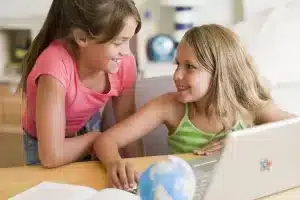
I’ve seen this with Lily. She’s a great listener, always paying full attention when her friends are speaking. Her friends appreciate this, and it’s helped her form strong friendships at school.
Strategies for Teaching Active Listening
Teaching active listening can start with simple activities. One strategy we’ve used is the “echo game,” where Max and Lily take turns sharing something, and the other has to repeat back what they heard. This not only helps them practice active listening but also enhances their understanding and memory.
Another strategy is modeling active listening ourselves. When Lily or Max talks to me, I make sure to give them my full attention, show that I’m listening, and respond appropriately. This not only shows them that I value what they’re saying but also provides a model of how to listen actively.
In the end, active listening is about understanding, respect, and effective communication. It’s a skill that will not only enhance our children’s social interactions but also their overall social development. And as parents, it’s a joy to see our children becoming thoughtful and attentive listeners.
The Power of Active Listening in Social Development
Listening is more than just hearing the words that are spoken. It’s about understanding, absorbing, and responding – that’s what we call active listening. It’s a crucial social skill that can significantly enhance our children’s social interactions.
Active Listening: A Key to Effective Communication
Active listening is all about being fully present in the conversation, understanding the message, and responding thoughtfully. It’s a skill that fosters better communication, builds stronger relationships, and promotes mutual respect.
Take Lily, for example. She’s always been a good listener. When her friends talk, she gives them her full attention, nods to show she’s following along, and responds with thoughtful comments or questions. This has helped her form strong friendships at school and has made her a go-to person when her friends need someone to talk to.
Strategies to Foster Active Listening
Teaching active listening can start with simple, fun activities. One game we love to play at home is the “echo game,” where Max and Lily take turns sharing something, and the other has to repeat back what they heard. This not only helps them practice active listening but also enhances their understanding and memory.
Modeling active listening ourselves is another powerful strategy. When Max shares his latest dinosaur facts, I make sure to give him my full attention, show that I’m listening, and respond with interest. This not only shows Max that I value what he’s saying but also provides a model of how to listen actively.
In the end, active listening is about understanding, respect, and effective communication. It’s a skill that will not only enhance our children’s social interactions but also their overall social development. And as parents, it’s a joy to see our children becoming thoughtful and attentive listeners.
Role-Playing as a Tool for Enhancing Social Skills
Role-playing is a powerful tool that can help children develop their social skills. It allows them to practice social scenarios in a safe and controlled environment, helping them understand different perspectives and navigate various social situations.
The Benefits of Role-Playing Activities
Role-playing activities offer a host of benefits for children’s social skill development. They help children understand and express emotions, practice empathy, and learn how to respond appropriately in different social situations.
For instance, Max, who’s a bit shy, has been using role-playing to practice social interactions. We’ve created scenarios where he meets new people or resolves conflicts, and this practice has helped him feel more comfortable in real-life social situations.
Role-Playing Scenarios for Social Skill Development
There are countless role-playing scenarios that can help children navigate various social situations. For example, you could create a scenario where two friends have a disagreement and need to find a resolution. This can help children practice conflict resolution skills.
Another scenario could involve meeting a new classmate. This can help children practice introducing themselves, asking questions, and showing empathy.
In our family, we’ve found role-playing to be a fun and effective way to enhance Lily and Max’s social skills. It’s a tool that allows them to explore different social scenarios, understand others’ perspectives, and navigate social situations with confidence. And as parents, it’s rewarding to see our children grow and develop through these activities.
The Importance of Eye Contact in Social Interactions
Eye contact is a powerful form of non-verbal communication that plays a crucial role in effective social interactions. It’s a skill that can significantly enhance our children’s ability to connect with others.
The Role of Eye Contact in Effective Communication
Eye contact is a way of showing attentiveness and respect in conversations. It signals that we’re engaged and interested in what the other person is saying.
For instance, Lily has been working on maintaining eye contact during her conversations. Whether she’s chatting with her friends or speaking with her teachers, she’s learned that eye contact helps her show that she’s actively listening and interested in the conversation.
Tips for Teaching Eye Contact
Teaching children to maintain appropriate eye contact can start with simple exercises. One strategy we’ve used is the “eye contact game,” where Max and Lily take turns maintaining eye contact while having a conversation. This not only helps them practice eye contact but also enhances their active listening skills.
Another strategy is modeling good eye contact ourselves. When Lily or Max talks to me, I make sure to maintain eye contact, showing them that I’m fully engaged in the conversation. This not only shows them that I value what they’re saying but also provides a model of how to maintain eye contact.
In the end, eye contact is about showing respect, attentiveness, and interest in others. It’s a skill that will not only enhance our children’s social interactions but also their overall social development. And as parents, it’s a joy to see our children becoming more confident and effective communicators.
Creating a Social Skills Practice Plan for Your Child
Improving social skills is a journey, and having a practice plan can make this journey more structured and effective. It’s about identifying the skills your child needs to work on and creating opportunities for them to practice these skills.
How to Create a Social Skills Practice Plan
Creating a social skills practice plan starts with understanding your child’s needs. For instance, Max needed to work on his conversation skills, while Lily wanted to improve her empathy. Once you’ve identified the skills your child needs to work on, you can start planning activities that help them practice these skills.
It’s also important to set realistic goals and celebrate progress. Remember, improving social skills is a process, and every step forward is worth celebrating.
Activities and Strategies for Social Skills Practice
There are countless activities and strategies that can help your child practice and improve their social skills. Role-playing, as I mentioned earlier, is a great way to practice different social scenarios. Reading stories and discussing the characters’ feelings can help improve empathy.
For Max, we’ve also incorporated social skills practice into his daily routines. For instance, during dinner, we have conversations where we practice active listening and eye contact. We also play games that require cooperation and teamwork, which has helped him improve his collaboration skills.
For Lily, we’ve used her love for painting to help her practice her social skills. We’ve organized painting parties where she gets to interact with other kids, share her work, and appreciate the work of her peers.
In the end, creating a social skills practice plan is about providing our children with the support and opportunities they need to improve their social skills. It’s a journey that requires patience and persistence, but the rewards are well worth it. And as parents, there’s nothing more fulfilling than seeing our children grow into confident and socially adept individuals.
Conclusion: Empowering Our Children Through Social Skills Development
As we’ve explored in this article, social skills are crucial for our children’s development. They help our kids form meaningful relationships, navigate various social situations, and grow into empathetic and understanding individuals.
We’ve discussed the importance of empathy, the art of asking questions, the power of active listening, and the role of eye contact in effective communication. We’ve also explored how role-playing can be a powerful tool for practicing social skills and how our children’s interests can be leveraged to enhance their social interactions.
Creating a social skills practice plan for your child can provide a structured and effective way to help them improve their social skills. Whether it’s through role-playing activities, conversation practice during dinner, or organizing social events around your child’s interests, there are countless opportunities to help your child practice and improve their social skills.
As parents, we have the power to provide our children with the support and opportunities they need to develop their social skills. It’s a journey that requires patience and persistence, but the rewards are well worth it.
So, let’s take the insights and strategies we’ve discussed in this article and put them into action. Let’s empower our children, Lily and Max, and all the Lilys and Maxs out there, to grow into confident, empathetic, and socially adept individuals. After all, as parents, there’s nothing more fulfilling than seeing our children grow and thrive.
Frequently Asked Questions
What are social skills in children?
Social skills in children refer to the abilities that allow them to interact and communicate effectively with others. These skills include understanding and expressing emotions, empathizing with others, listening, cooperating, respecting personal space, and maintaining eye contact.
Why are social skills important for children?
Social skills are crucial for children as they help them form healthy relationships, communicate their needs, understand others’ feelings, and navigate social situations. These skills also contribute to their emotional well-being and academic success.
How can I use my child’s interests to improve their social skills?
Leveraging your child’s interests can make social interactions more engaging and natural. For example, if your child loves dinosaurs, you can arrange playdates with other children who share this interest, or use dinosaur-themed games to teach social skills like taking turns and sharing.
What role does role-playing play in teaching social skills?
Role-playing is a powerful tool for teaching social skills. It allows children to practice social scenarios in a safe and controlled environment, helping them understand different perspectives and develop empathy. Role-playing can also help children learn how to navigate various social situations.
How can I teach my child about personal space?
Teaching about personal space can start with explaining the concept and why it’s important. You can use activities like ‘bubble space’ where you pretend everyone has a bubble around them that shouldn’t be popped, or use visual aids like hula hoops to demonstrate the concept. Regular reminders and practice can help children understand and respect personal space.




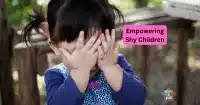


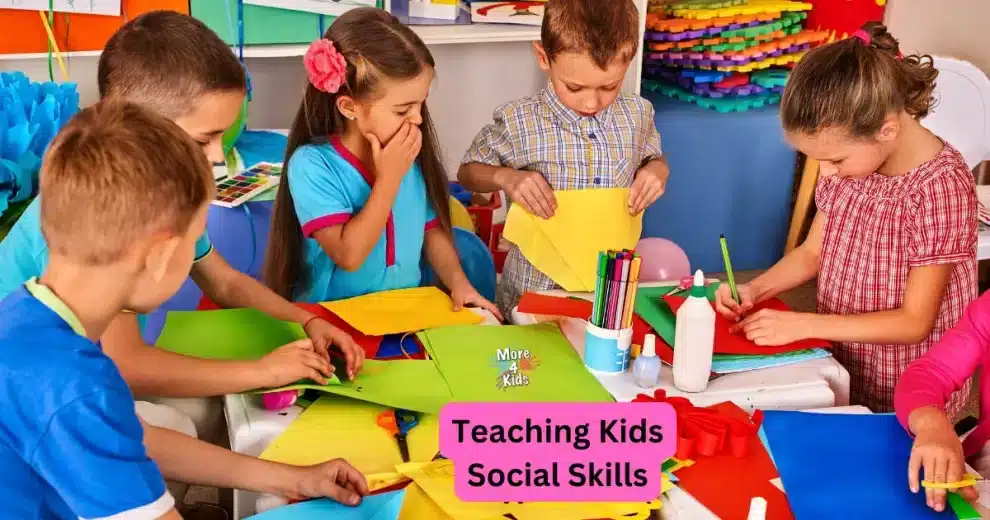
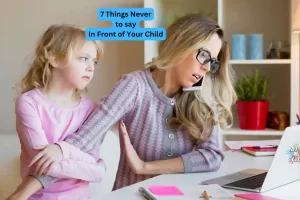
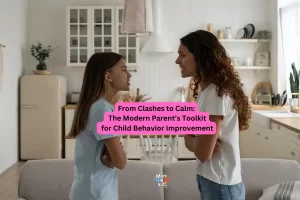


Add Comment